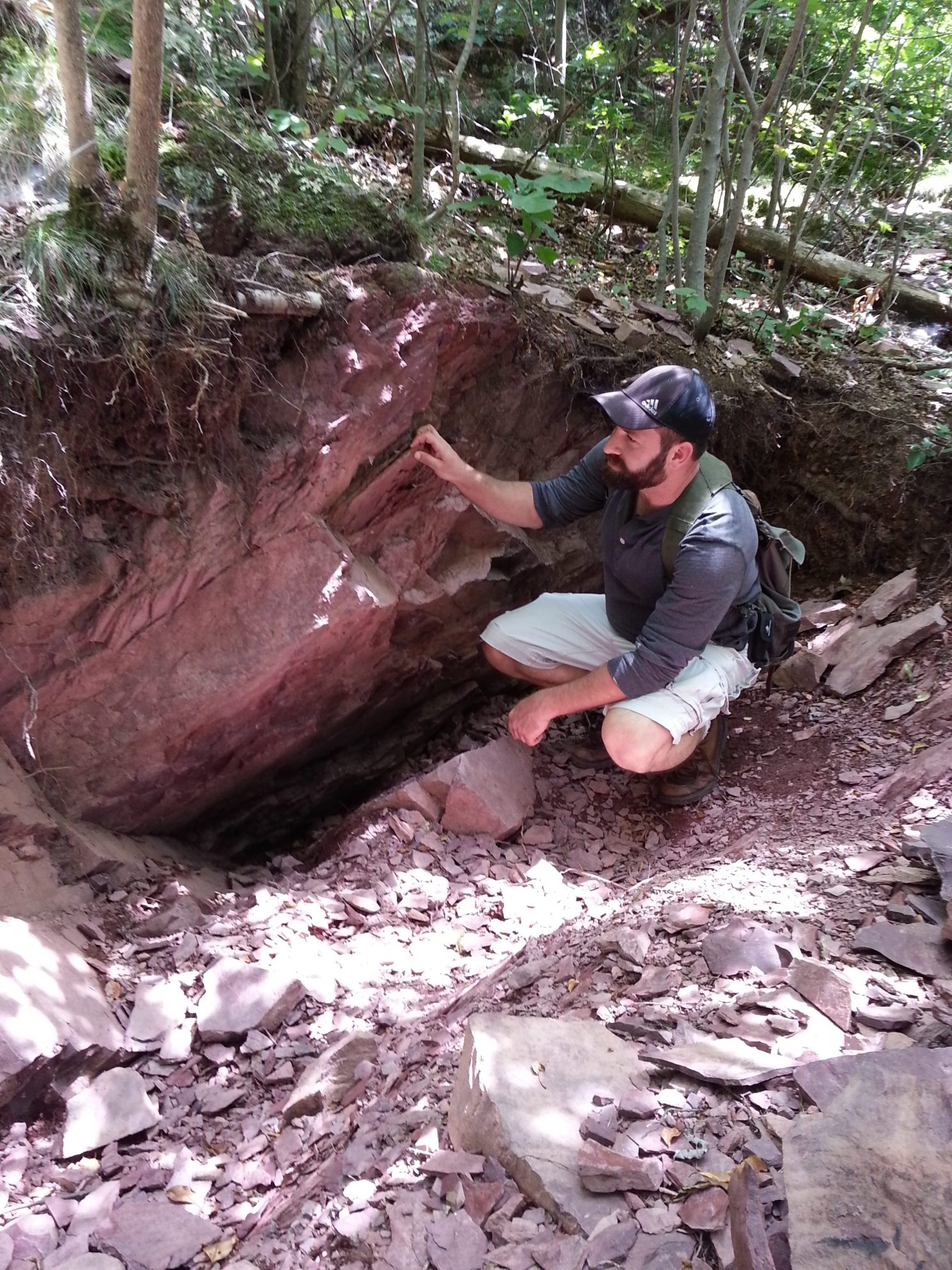Fossil site in Massachusetts reveals 320-million-year-old ecosystem

Study author Richard Knecht at the fossil site.
Provided by Richard Knecht
Researchers have discovered an exceptionally preserved fossil site in Massachusetts that provides a rare glimpse into terrestrial life from over 300 million years ago. The findings, published in Nature Communications, reveal a diverse ecosystem of early land-dwelling animals and plants from a time period that has been poorly understood.
The fossil site, called Lantern North, dates to approximately 320-318 million years ago during the early Pennsylvanian period and is located in the Wamsutta Formation of eastern North America. This predates many well-known fossil sites from the Coal Age. Researchers uncovered body and trace fossils of over 130 different species, including early reptiles, amphibians, arachnids, insects, and an array of plant fossils. Many represent some of the oldest known examples of their groups.
The site preserves not just body fossils, but also footprints, burrows, and other trace fossils that provide insight into animal behaviors and interactions. Evidence was also found of some of the earliest known insect behaviors, including oviposition (egg-laying) and plant galling. This pushes back the fossil record for these activities by millions of years.
The ecosystem represents a drier, upland environment compared with the coal swamps typically preserved from this time period. This provides new perspectives on early terrestrial biodiversity.
“This site gives us an unprecedented look at a terrestrial ecosystem from a crucial time in the evolution of life on land,” said lead author Richard Knecht, a Griffin Graduate School of Arts and Sciences student in the Department of Organismic and Evolutionary Biology. “We’re seeing evidence of complex plant-insect interactions and some of the earliest appearances of major animal groups that went on to dominate terrestrial habitats.”
The Wamsutta Formation represents deposition in seasonally wet, forested alluvial fan environments near the paleoequator. This setting contrasts with the swampy coal-forming environments that produced most fossil sites of similar age.
“The exceptional preservation of delicate impressions and traces allows us to reconstruct behaviors and ecology in ways not usually possible with body fossils alone,” said co-author Jacob Benner of the University of Tennessee. “We can see how these early terrestrial communities functioned as integrated ecosystems.”
The researchers note that continued study of the site has potential to reveal even more about the origins and early evolution of major animal and plant groups and their interactions. The findings demonstrate the importance of exploring fossil sites beyond the typical swamp environments of the Coal Age to gain a fuller picture of ancient terrestrial ecosystems.




